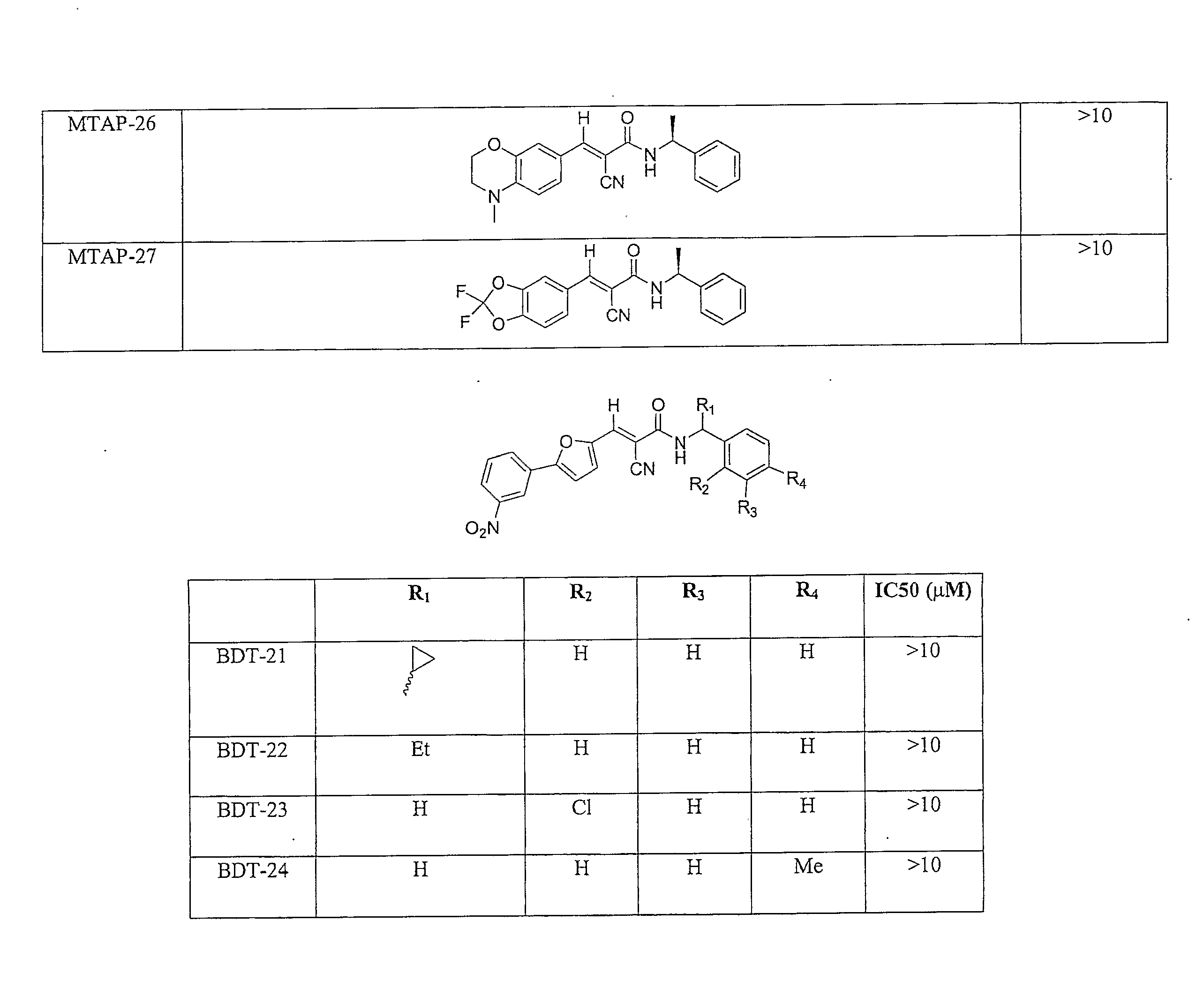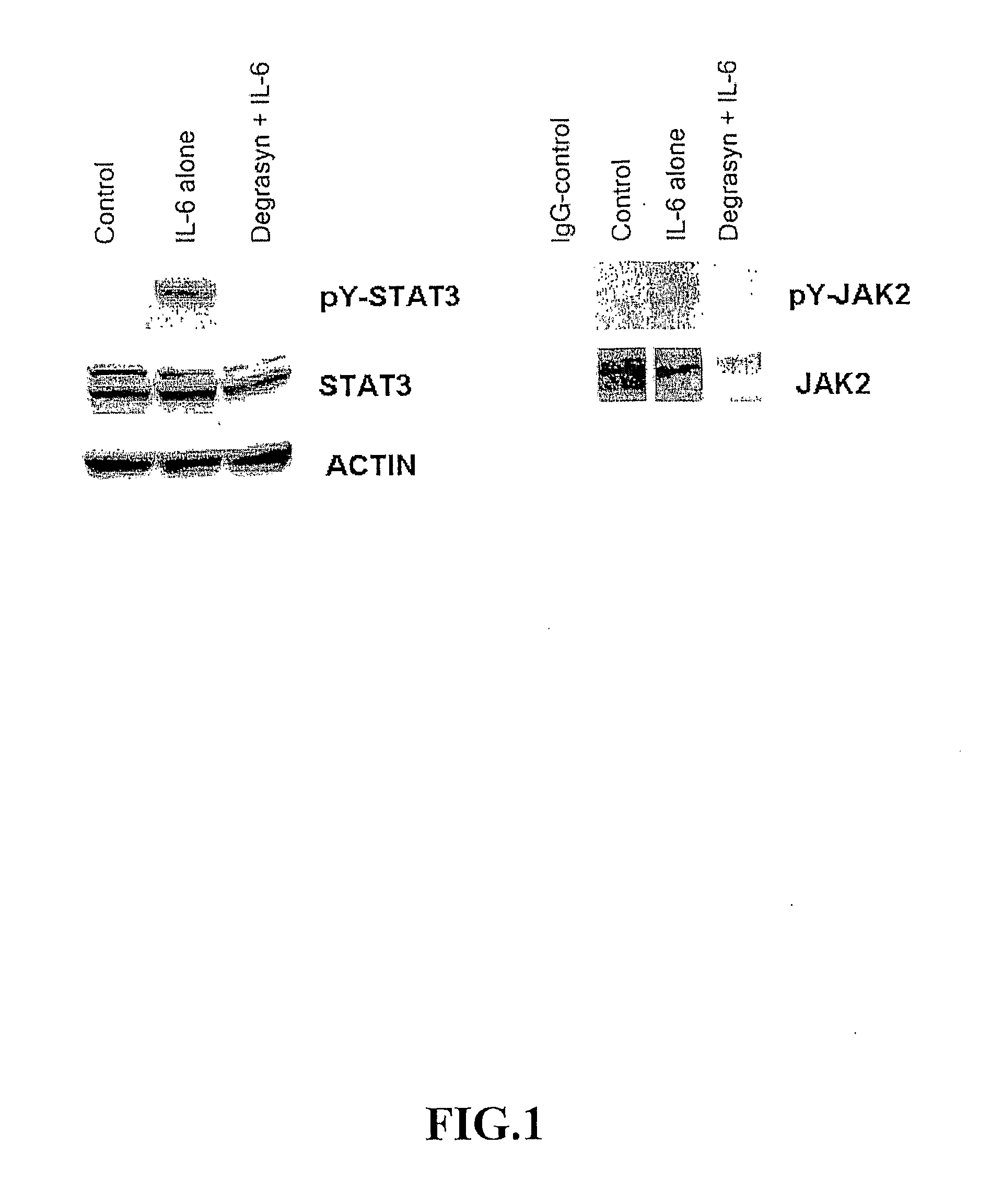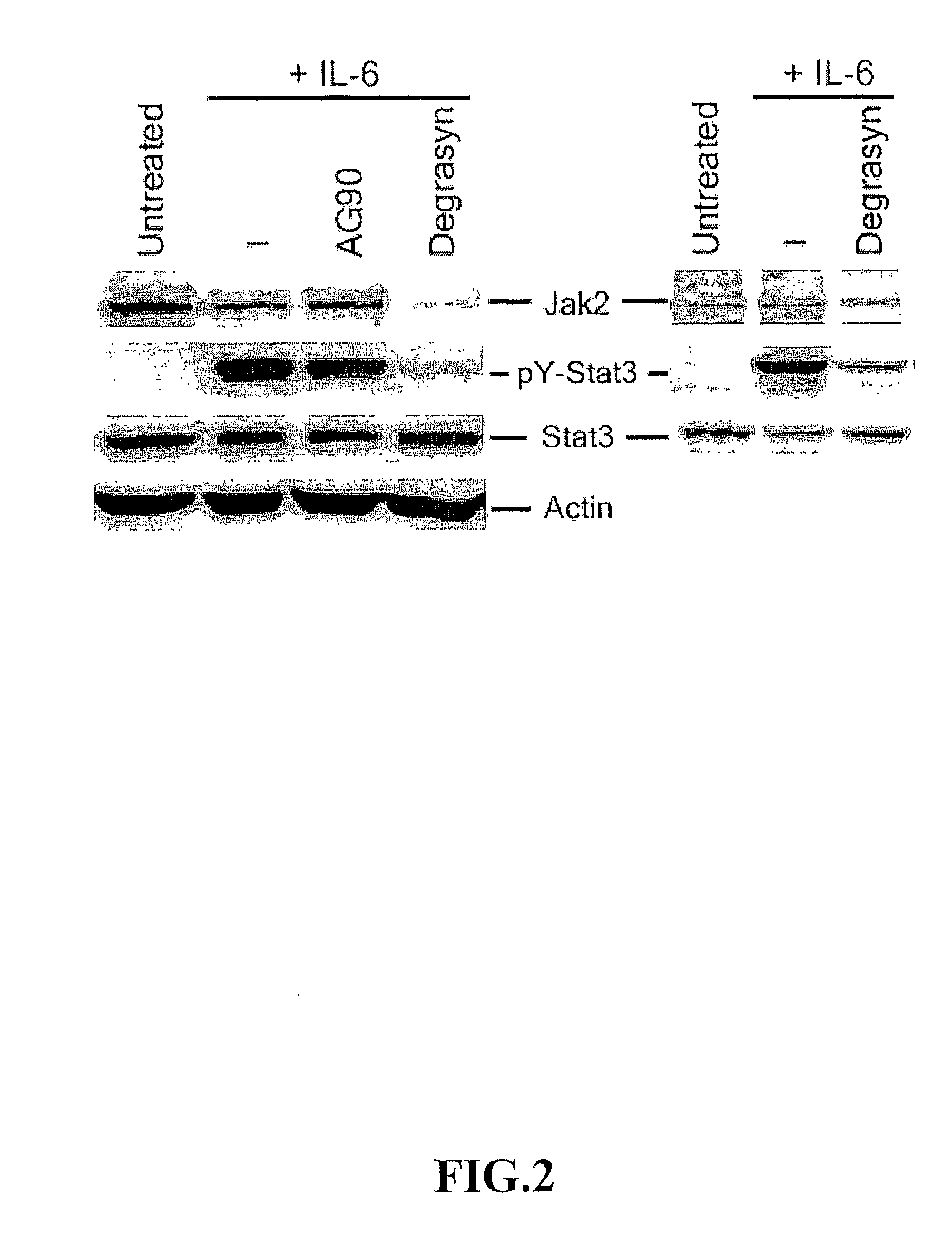Tryphostin-analogs for the treatment of cell proliferative diseases
a technology of tryphostin and analogues, which is applied in the field of treatment of cell proliferative diseases, can solve the problems of limited activity of ag490, insufficient potency of ag490 to warrant clinical investigation of this compound, and unregulated growth and survival, so as to reduce the stability of signaling proteins, improve pharmacological profiles, and improve the effect of potency
- Summary
- Abstract
- Description
- Claims
- Application Information
AI Technical Summary
Benefits of technology
Problems solved by technology
Method used
Image
Examples
example 1
Synthesis and Molecular Modeling of Degrasyn Libraries
[0295]In order to better explore the chemical space surrounding the current structural template, the diversity of chemical building blocks was explored. In one synthetic procedure, aromatic amines and aromatic aldehydes were utilized as the building blocks. A search was conducted in silico using a database of available compounds from 49 different chemical database vendors. All modeling work was completed on a 4-processor SGI Tezro using the Sybyl Modeling Suite from Tripos, Inc. These compounds had previously been converted to a 2D / 3D searchable database with the Unity package in Sybyl and a C-shell script was used to search each one in series using the 2D search feature of the dbsearch command. The 2D structures and Sybyl Line Notation (SLN) for the queries are as shown:
[0296]The search for aromatic amines resulted in 5,541 compounds, which was further reduced to 3,084 by screening out compounds with MW>250, mixtures, those that...
example 2
General Procedure for Synthesizing Certain Compounds of the Present Invention
[0297]Scheme 1, shown below, represents a general synthetic procedure for the synthesis of certain compounds of the present invention, wherein R1-R6 may comprise one or more of any substituent as described herein, and X may be N or C (WO 1995 / 028922). For example, equimolar amounts of benzylamine and cyanoacetic methyl ester quantitively react to form N-benzylcyanoacetamide as an intermediate, then Knoevenagel condensation with benzaldehyde furnishes the final product. Over sixty compounds of the present invention have been prepared via this route.
example 3
Example of A Synthetic Preparation of Certain Compounds of the Present Invention
Solid Phase—Resin
[0298]The following scheme represents an exemplary method of preparing certain compounds of the present invention. This procedure is based on a literature preparation (Gu et al., 2005).
General Procedure for Reductive Amination Using Asymmetric Aromatic Amines with BAL-PG-PS Resin
[0299]BAL-PG-PS Resin (1 g), NaBH3CN (1.56 g, 25 equiv), DCE (35 mL), 2-phenylethylamine (3.25 mL, 25 equiv) and AcOH (0.38 mL, 4 equiv) was rotated on orbital shaker for 24 h. The resultant secondary amine resin was washed with DCM (10 mL×10) and DMF-CH2Cl2 (1:1) (10 mL×10) and dried well. A ninhydrin test confirmed the completion of the reaction.
General Procedure for Cyanoacylation of Secondary Amine:
[0300]A solution of cyanoacetic acid (3 g, 20 equiv), DIPCDI (20 equiv) and DIPEA (20 equiv) in DMF (30 mL) was added to the above resin and rotated on an orbital shaker for 7 h. The resin was washed with DMF (20 m...
PUM
 Login to View More
Login to View More Abstract
Description
Claims
Application Information
 Login to View More
Login to View More - R&D
- Intellectual Property
- Life Sciences
- Materials
- Tech Scout
- Unparalleled Data Quality
- Higher Quality Content
- 60% Fewer Hallucinations
Browse by: Latest US Patents, China's latest patents, Technical Efficacy Thesaurus, Application Domain, Technology Topic, Popular Technical Reports.
© 2025 PatSnap. All rights reserved.Legal|Privacy policy|Modern Slavery Act Transparency Statement|Sitemap|About US| Contact US: help@patsnap.com



